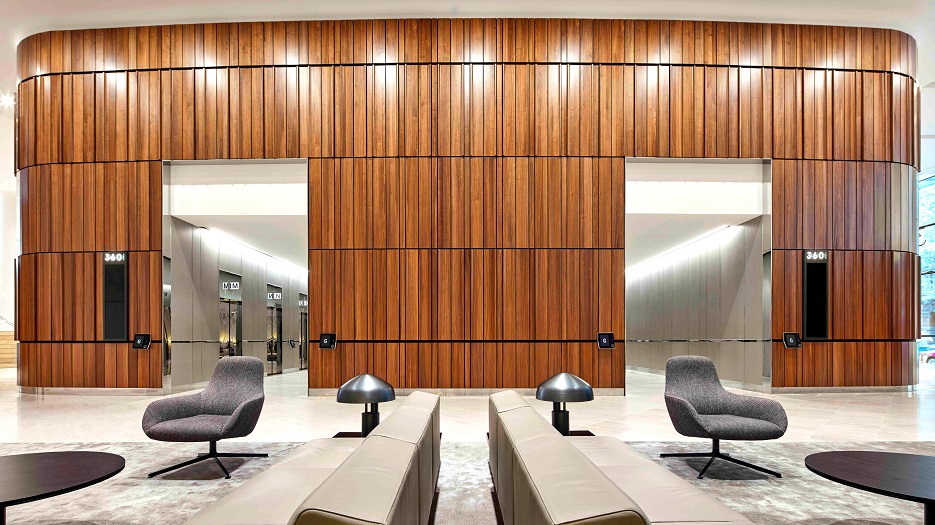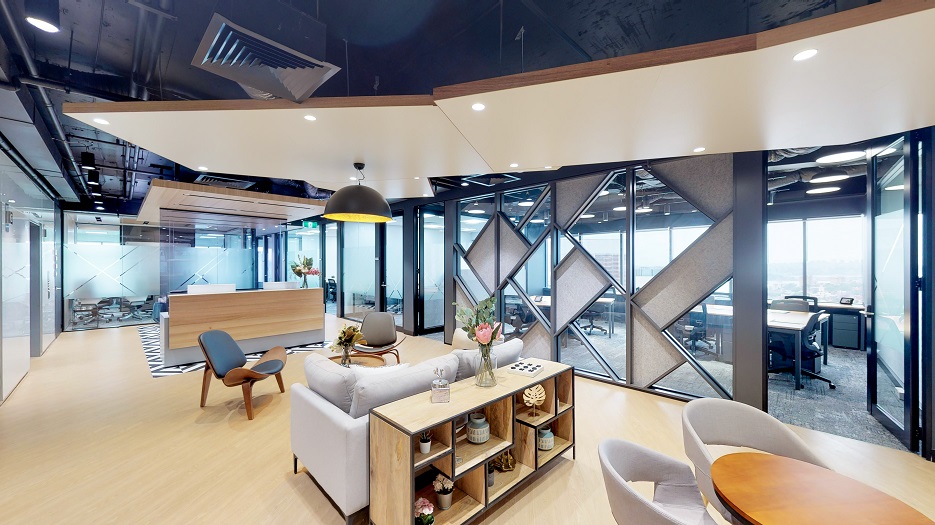As demand for flexible offices evolve overtime, workplace strategies for corporate and business professionals have shifted considerably in light of changing environmental factors, personal preferences and the increased prevalence of hybrid work arrangements. As a result, businesses are increasingly looking for flexible and sustainable workspaces that can accommodate the latest technology and reconsidering how this asset class can be optimised for a new era. In this regard, Compass Offices has succeeded in filling in a gap in the market for efficient, high-end office space for corporates and business professionals who seek to right size their flexible office.
The purpose of the office could be multi-faceted, the evolving workspace has created different ways to work within the modern workforce, one of which is the increasing prevalence of the home office or alternatively, the integration of the home office into the work environment – which has its limits. The typical dwellings in Asia Pacific tend to be smaller in size relative to their counterparts in North America. The limited space and added costs of acquiring the proper work equipment may not be conducive to productivity. This has given rise to flexible workspace in the past decade. As the name would suggest, a flexible office offers not only convenience but the flexibility to flex-up or flex down with relatively great ease in a changing risks environment, directly affecting the scalability and success of a business as a result.
This article outlines the underlying principles and dynamics behind the evolving workplace across Asia Pacific and beyond and provides a roadmap for workplace optimization from the occupiers’ perspective. As alternative working models such as the flexible workspace become the preferred option over the traditional office for businesses of all sizes, the demands of the discerning occupier are being reshaped and driving new changes in the office sector. These changes can further be categorised as cyclical changes that occur over a relatively short span of time, such as a business or economic cycle. In contrast, underlying structural changes occur over a longer period of time. Fundamentally, the office sector is being structurally changed and cyclically challenged in the modern world.

Structural and Cyclical Changes
Businesses are increasingly made aware of sustainability requirements imposed by institutional authorities or governmental bodies at large. One of the most direct ways to tackle this issue is by setting net zero goals or to be mindful of carbon emissions during a business’ operational processes. Typically, office building occupancy can be one of the major contributing factors towards carbon emission. Hence, occupiers are increasingly aware that the building in which their business operates should provide a environment conducive to concepts of sustainability. Correspondingly, occupiers are increasingly health conscious and becoming more wellness-centric these days, the discerning occupiers are generally concerned over the welfare of their employees, the overall air quality, or the general amenities. By extension, they may be more inclined to opt for flexible workspace in green buildings with upgraded lighting, building access or end-of-trip facilities, just to name a few.
More specifically, the search for the right flexible workspace often requires consideration to be given to amenities, particularly in a prime premium building in a CBD location. Other crucial considerations include engagement, community building, connectivity within the city’s transportation hubs, the availability of parking and alternative solutions where public transportation is not available. Moreover, integration with the local F&B hubs or other entertainment could be valuable to the typical employee, as the majority would go into the office not just to work but would most likely rely on the surroundings for socialisation purposes with their peers outside of work hours.

A Prime time to Explore Flexible workspace Due to Concurrent Economic Landscape
Finally, recent world events and macroeconomic factors such as the threat of recession and rising interest rates are contributors to changing resource allocations. Businesses are now less inclined to pour millions of dollars on fit-outs at a time when many viewed capitals should be rightfully spent on mainstream business purposes, against an economic backdrop of slowing GDP growth, rising interest rates and inflationary environment in recent years. With these factors at play, the manner in which the office will be used poses further considerations to be examined.
Despite the aforementioned economic volatility and uncertainties in recent years, a lot of companies have been expanding nonetheless, this presents some intriguing observations at the market level and attributes to changing trends in workspace optimisation. For instance, the increasingly common mandate of multi-national tech firms that require their employees to work within the office premises [at least] three times a week. Naturally, the majority would opt to come into the office on Tuesday, Wednesday, Thursday, with no working employees on the remaining days, it is therefore important to consider the implications of these employment trends when optimizing the flexible workspace.
Location. Location. Location
One must also examine beyond the vacancy headline as it only presents an instantaneous snapshot of a given time in each market segment. It is equally important to evaluate the submarket in order to get the complete outlook. It might be apparent that the areas of high occupancy may actually be areas that most businesses would actually want to be in. Even though the vacancy at the city level might be high. In sum, it is therefore of vital importance that the locality of the flexible workspace is within a city’s major business district.

Generation Z and Y
Interestingly, the generational composition of the modern occupier poses significant considerations. It is generally believed that the largest generation globally in terms of population size is Generation Z, but Generation Y (the Millennials), are the largest generation within the workforce, who are now occupying c-level positions with real decision-making power. Simultaneously, research has shown that both Generation Z and Generation Y have the tendency to regard environmental, wellbeing, mental health quite highly on their agenda. They are precisely the generations who will take actions on humanitarian issues in both personal and work spheres, and by extension, would expect a commitment to sustainability, health, and wellness from their potential employer.
Immersive AI and Technological Advancement
In retrospect, flexible workspace has long been implementing the latest technology as means to mobilise a greater level of sustainability or to measure sustainability as it feeds into how, when and where people work. Compass’ “Untapped Opportunities – Immersive AI that Redefines Company Cultures” identifies the interplay between technological advancement in the flexible office and how that in turn can be a driving force for diversity, equity, and inclusion within an organisation.

In sum, speculations from third-party data providers estimate a whopping 15 million office jobs across the Asia Pacific region by the end of this decade, leading to a growing office market as more space will be required. While statistical forecasts are bound to ensure consistent analysis and research in the office sector, this article outlined some of the trending factors that are reshaping the evolving workspace, and how it contributes to the prevalence of the flexible workspace in the modern world. Taken together, these driving forces will allow businesses to more accurately define the space they currently need, and the amount of space they might need in the future.